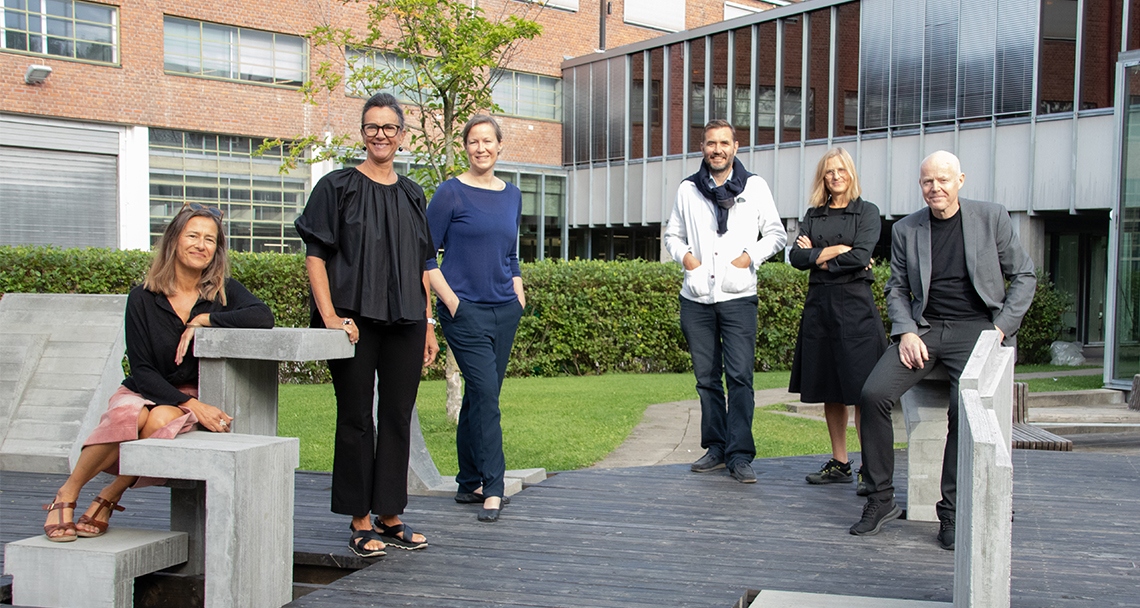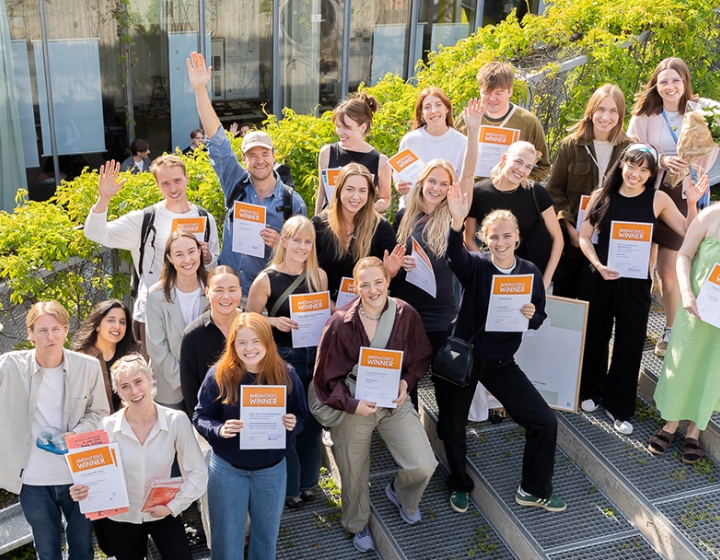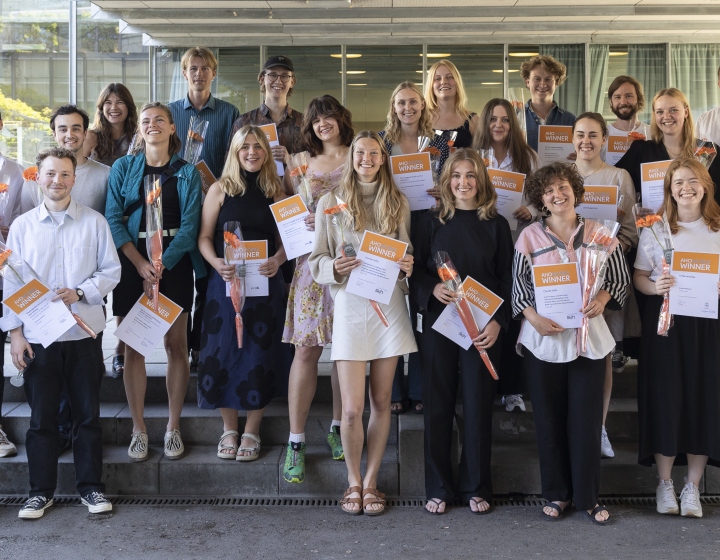New academic organisation at the Oslo School of Architecture and Design
15. September, 2021
The Oslo School of Architecture and Design has undergone a reorganisation. The result has led to two new departments and two new roles in management – a Pro-Rector of Education and a Vice-Rector of Research.
“We are growing and new requirements are being imposed, which means that we must organise and structure ourselves in an even better way. Even though progress was delayed due to the pandemic, we have taken three to four years to complete this project. The project was originally triggered by discussions we had about how to make our school even better,” explains Rector Ole Gustavsen.
We have closed down the four old institutes and established three new ones: the Institute of Architecture, the Institute of Design and the Institute of Urbanism and Landscape Architecture.
“The institutes are now in accordance with the main programmes at the school and it will be easier for both students and employees to understand the organisation,” Gustavsen explains.
The architecture programme was previously spread across several institutes that each delivered parts of the teaching programme we offered to our students.
“The parts of the programme were of high quality and were very good, but it was difficult to coordinate the course of study to ensure a good flow,” Gustavsen explains.
New for the three institutes is that they will have the same internal organisation with a management team, a programme committee and will be split into academic groups with academic group leaders.
“We want to provide our employees with more influence in the decisions that are made and we want to be clearer about how decisions are made in the departments,” he says.
No more bossing
The new reorganisation entered into force on 1 August 2021. The school also ended up with two new rectors, a Pro-Rector of Education and a Vice-Rector of Research.
“The growth experienced by the school over the last ten years has been difficult to manage with a single rector. The two new positions will be able to ensure an even greater focus on our core activities and, of course, a new division of the work within the school’s management team. We have extremely strong academic professionals at the school and they do not need any more bossing. They need support and coordination and people who can follow up on our ambitions and make continuous improvements,” Gustavsen explains.
Even though the internal structure has changed, much will seem the same to students.
“We will have the same study programme, the same courses and the same teachers and the majority of students are unlikely to think about the department structure much, now or before. But employees will notice it, as the internal life and organisation of the departments will be different,” he explains.
Employees have been very involved in the restructuring and Gustavsen is impressed with the commitment and diversity of opinion that's been displayed in connection with the process.
“We have had absolutely necessary discussions across the school that we have never had before, which has been incredibly exciting. The rich diversity of opinion is a strength, but it can also be extremely challenging, particularly in cases where we need to reach a unified solution. At the same time, it is important for the school to safeguard diversity, as this provides new perspectives and a more vibrant school. The process has also enabled us to get to know the diverse content of the school and, not least, each other in a much better way,” he explains.
This is the new management
From 1 August, we were joined by several new heads of department, a new Pro-Rector of Education and a Vice-Rector of Research. You can become better acquainted with them here.
Head of Institute of Architecture: Nina Berre
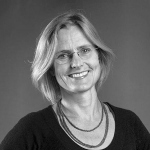 Nina Berre is an architect, architectural historian with a PhD from the Norwegian University of Science and Technology. She is the former CEO of Norsk Form, Director of Architecture at the Norwegian National Museum and Chairperson of OAT. Nina is a partner in B+E Curating Architecture and Urbanism. She is currently writing the fourth volume (1940-1980) of Norwegian Architectural History (Pax) and teaching at AHO´s Master of Architecture Program. Before the re-organisation, she was Head of Institute of Form, Theory and History.
Nina Berre is an architect, architectural historian with a PhD from the Norwegian University of Science and Technology. She is the former CEO of Norsk Form, Director of Architecture at the Norwegian National Museum and Chairperson of OAT. Nina is a partner in B+E Curating Architecture and Urbanism. She is currently writing the fourth volume (1940-1980) of Norwegian Architectural History (Pax) and teaching at AHO´s Master of Architecture Program. Before the re-organisation, she was Head of Institute of Form, Theory and History.“I intend to promote the department nationally and internationally and collaborate with Norwegian architects. We will develop teaching and research through improved internal collaboration at the Department of Architecture, as well as by utilising the potential of the outstanding academic professionals working there, whose backgrounds span architecture, arts, technology and humanities."
Head of Institute of Design: Rachel Troye
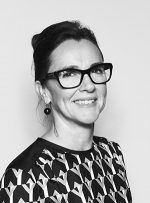 Rachel Troye, a Professor in Visual Communication, is the Head of the Institute of Design. Rachel Troye has 20 years of work experience from the design industry and business in Switzerland and Norway, with a particular focus on interdisciplinary projects within visual identity and branding. She has lectured at several higher education institutions in Norway, holds key national and international board positions within the university college sector and industry organisations and fulfils a number of roles as an examiner, on panels and committees. She is currently the Vice President of Cumulus, the global association for art and design education and research.
Rachel Troye, a Professor in Visual Communication, is the Head of the Institute of Design. Rachel Troye has 20 years of work experience from the design industry and business in Switzerland and Norway, with a particular focus on interdisciplinary projects within visual identity and branding. She has lectured at several higher education institutions in Norway, holds key national and international board positions within the university college sector and industry organisations and fulfils a number of roles as an examiner, on panels and committees. She is currently the Vice President of Cumulus, the global association for art and design education and research.“The Department of Design is entering an exciting phase thanks to the number of study places having doubled. Through increased resources for teaching and research, we will have new opportunities to strengthen our academic fields and our position, both nationally and internationally.”
Head of Institute of Urbanism and Landscape: Hanne Bat Finke
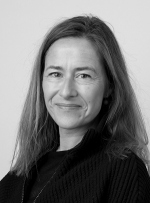 Hanne Bat Finke is head of institute and associate professor at the Institute of Urbanism and Landscape, and a coordinator of the new master in landscape architecture shared with The Arctic University of Norway in Tromsø. She is mainly teaching at the undergraduate with a focus on FORM, PROCES AND DYNAMICS. Finke has extensive practice experience, from over 20 years with her own practice and former employments. Additionally, Finke has been designated President for the Landscape Committee under the Academic Council in Denmark, as a state advisor in landscape planning and landscape architecture.
Hanne Bat Finke is head of institute and associate professor at the Institute of Urbanism and Landscape, and a coordinator of the new master in landscape architecture shared with The Arctic University of Norway in Tromsø. She is mainly teaching at the undergraduate with a focus on FORM, PROCES AND DYNAMICS. Finke has extensive practice experience, from over 20 years with her own practice and former employments. Additionally, Finke has been designated President for the Landscape Committee under the Academic Council in Denmark, as a state advisor in landscape planning and landscape architecture.Vice-Rector for research: Lise Amy Hansen
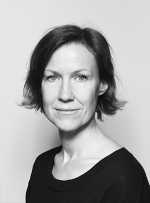 Lise Amy Hansen is an Associate Professor at the Institute of Design. She studied at Central Saint Martins and then did her Master's degree at the Royal College of Art in London, after which she started her own design studio and worked extensively with culture, theatre, dance and urban regeneration. While running her studio she also taught at Central Saint Martins for several years before returning home after spending 13 years in London. Lise holds a PhD in Interaction Design from the AHO entitled "Communicating movement – full-body movement as a design material for digital interaction".
Lise Amy Hansen is an Associate Professor at the Institute of Design. She studied at Central Saint Martins and then did her Master's degree at the Royal College of Art in London, after which she started her own design studio and worked extensively with culture, theatre, dance and urban regeneration. While running her studio she also taught at Central Saint Martins for several years before returning home after spending 13 years in London. Lise holds a PhD in Interaction Design from the AHO entitled "Communicating movement – full-body movement as a design material for digital interaction"."The AHO develops a lot of knowledge in the studio and in collaboration with others, as well as in national and international research projects and we could communicate and present more about what we do. Our research results are also beyond what we might call traditional research outcomes, and we have a potential in looking look at how we develop knowledge in our disciplines and how that knowledge in turn may be communicated,"
Pro-Rector for education: Espen Surnevik
 Espen Surnevik has been affiliated with the AHO in a teaching capacity since 2009 and has recently been the Head of the Institute of Architecture. Espen also runs his own architectural practice and has developed projects such as Våler Church in Hedmark (2015) and Østre Porsgrunn Church in Telemark (2019). However, his most internationally published project is probably his small PAN Treetop Cabin project in Åsnes (2017).
Espen Surnevik has been affiliated with the AHO in a teaching capacity since 2009 and has recently been the Head of the Institute of Architecture. Espen also runs his own architectural practice and has developed projects such as Våler Church in Hedmark (2015) and Østre Porsgrunn Church in Telemark (2019). However, his most internationally published project is probably his small PAN Treetop Cabin project in Åsnes (2017).«The school already has a great educational milieu that needs to be cultivated and also provided with the conditions necessary for further development. I am a big fan of the fact that the AHO is an academy with a wide range of teachers who represent different points of view and perspectives,"
